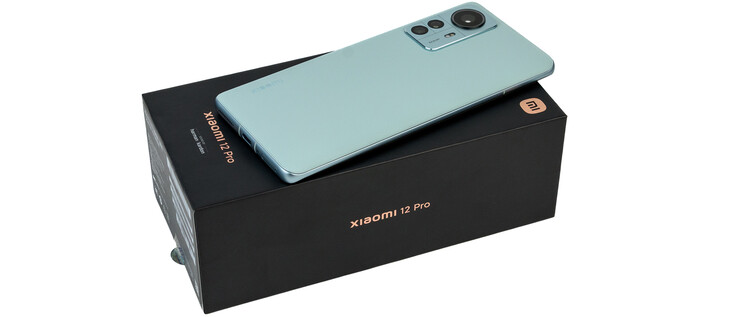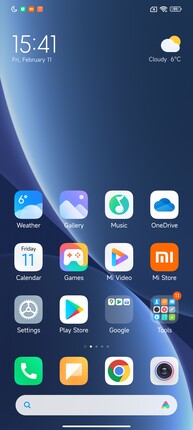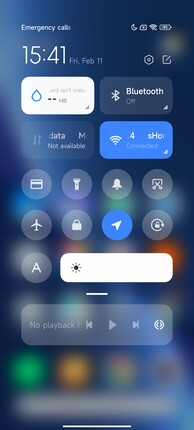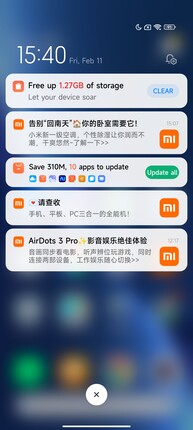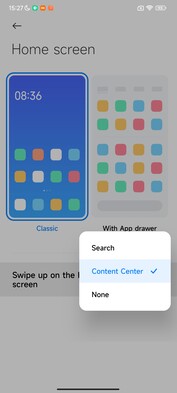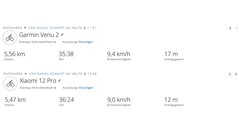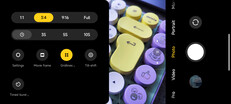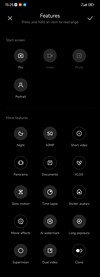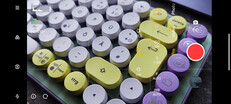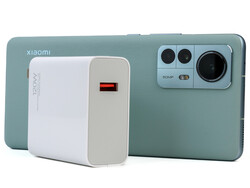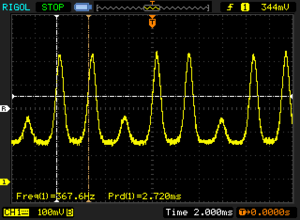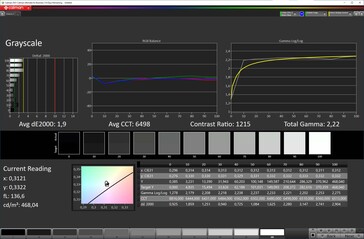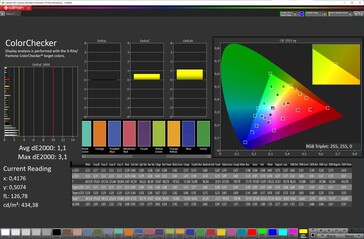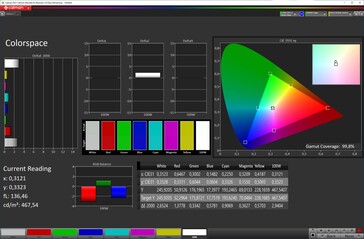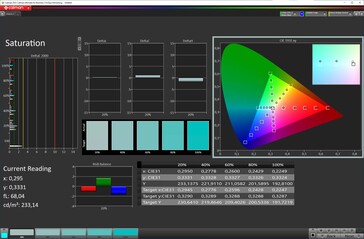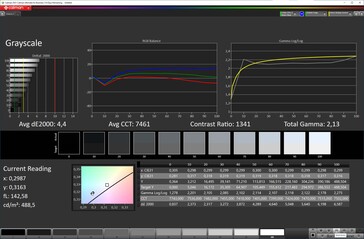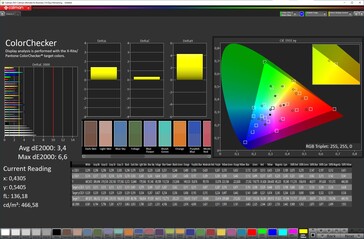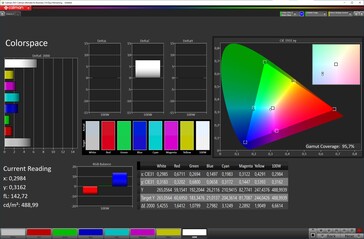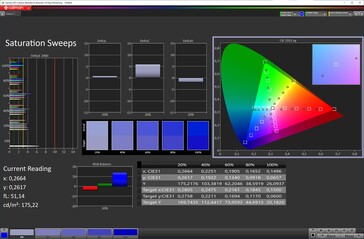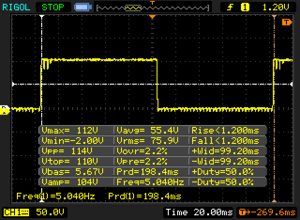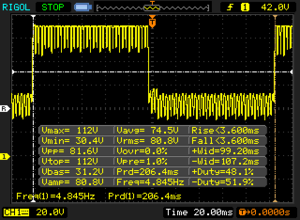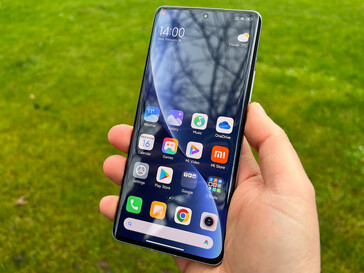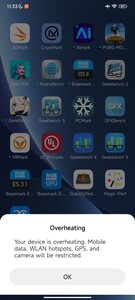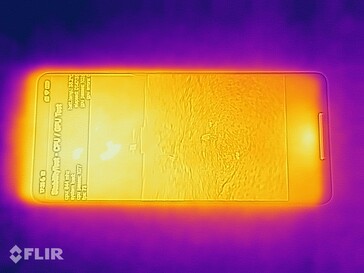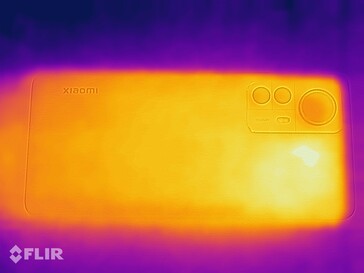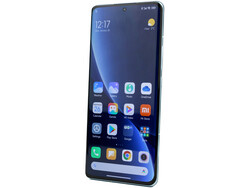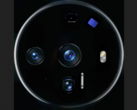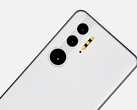Xiaomi 12 Pro review - Powerful premium smartphone with Snapdragon 8 Gen. 1
Since the Xiaomi 12 series is not yet available in Europe and Xiaomi still keeps us waiting, we are testing an imported version of the top model from the high-end series. The Xiaomi 12 Pro relies on top-of-the-line technology in all areas and it is available in various storage configurations. Users can choose between 8 and 12 GB of RAM and 128 or 256 GB of internal storage. Expanding the storage via a microSD card is not possible.
Compared to its predecessor, the camera setup in particular has seen some improvements. Xiaomi replaced the Samsung main sensor with a Sony sensor and upgraded both the ultra-wide-angle and the telephoto sensors with 50-MP Samsung sensors. The smartphone is powered by the brand-new Qualcomm Snapdragon 8 Gen. 1, making it one of the first devices available with the top SoC from California. Similarly, the display promises an improved adaptive refresh rate regulation and a higher brightness.
Since the Xiaomi 12 Pro is the first flagship launched in 2022, it still primarily competes against models from the previous year. This includes the iPhone 13 Pro Max, Samsung Galaxy S21 Ultra, and the Oppo Find X3 Pro. However, even cheaper smartphones such as the Motorola Edge 20 Pro or the Google Pixel 6 fall into the same price category as Xiaomi's new reference smartphone.
Potential Competitors in Comparison
Rating | Date | Model | Weight | Drive | Size | Resolution | Price |
|---|---|---|---|---|---|---|---|
| 87.6 % v7 (old) | 02 / 2022 | Xiaomi 12 Pro SD 8 Gen 1, Adreno 730 | 204 g | 256 GB UFS 3.1 Flash | 6.73" | 3200x1440 | |
| 86.9 % v7 (old) | 10 / 2021 | Motorola Edge 20 Pro SD 870, Adreno 650 | 185 g | 256 GB UFS 3.1 Flash | 6.70" | 2400x1080 | |
| 90.4 % v7 (old) | 02 / 2021 | Samsung Galaxy S21 Ultra Exynos 2100 5G, Mali-G78 MP14 | 227 g | 128 GB UFS 3.1 Flash | 6.80" | 3200x1440 | |
| 90.5 % v7 (old) | 10 / 2021 | Apple iPhone 13 Pro Max A15, A15 GPU 5-Core | 238 g | 128 GB NVMe | 6.70" | 2778x1284 | |
| 89.2 % v7 (old) | 06 / 2021 | Xiaomi Mi 11 Ultra SD 888 5G, Adreno 660 | 234 g | 256 GB UFS 3.1 Flash | 6.81" | 3200x1440 | |
| 88.9 % v7 (old) | 03 / 2021 | Oppo Find X3 Pro SD 888 5G, Adreno 660 | 193 g | 256 GB UFS 3.1 Flash | 6.70" | 3216x1440 |
Case - Choice Between Glass and Faux Leather
The Xiaomi 12 Pro is available in four different colors. The black, blue, and pink models each come with a glass back, making them one gram heavier than the green smartphone with the so-called vegan leather. On the flipside, the green version is 0.5 mm (~0.02 in) thicker for a total of 8.66 mm (~0.34 in). However, we measured a thiickness of 9.1 mm (~ 0.36 in), which suggests Xiaomi may be using an average of the rounded-off edges.
The camera bump protrudes by about 1.45 mm (~0.06 in) with the main optics protruding by an additional 1.05 mm (~0.04 in). As a result, the left side of the 12 Pro is susceptible to teetering when the phone is laid flat on a table and with the included silicone bumper this is even more pronounced.
We are very pleased with the build quality of the Xiaomi smartphone. The clearances are very even and tight. The choice of materials feels premium, although the haptics of the visually attractive faux leather are reminiscent of plastic with softeners. In contrast, the matte aluminum frame appears all the more elegant. We expected more resistance to our attempts at twisting from the corners and the Xiaomi 12 Pro creaks and crackles quite a bit.
The lack of an IP certification is disappointing. Although there is a rubber seal on the plastic SIM tray, waterproof smartphones usually come with a significantly thicker seal. The slot cover is flush with the frame, but the colors do not quite match exactly.
Connectivity - Xiaomi 12 Pro Only Supports USB 2.0
As expected, the Xiaomi 12 Pro offers neither a headphone jack nor a microSD card slot. However, we are disappointed to see Xiaomi still relies on a USB 2.0 port. Not only is the standard significantly slower than competing USB 3.2 solutions, it also does not support wired video output. OTG and tethering are still supported.
Excluding an FM receiver, the Xiaomi 12 Pro's feature list is fairly complete. This includes Bluetooth 5.2, NFC, and an IR transmitter. However, Xiaomi still does not integrate a UWB chip, which is currently exclusive to the Mix 4.
Software - Android 12 with MIUI 13
The Xiaomi 12 Pro currently runs Android 12 and Xiaomi's own MiUI 13 ex-factory. Since our test device is the Chinese version of the smartphone, the language selection is severely limited and most users in the western hemisphere will most likely be forced to choose English.
For similar reasons, GetApps and many Chinese applications come preinstalled. The keyboard layouts are unorthodox and should thus be quickly replaced with GBoard or Swift. Although this is not relevant to the Chinese market, the Xiaomi 12 Pro comes wiith all the required Google services excluding the Google Play Store, which has to be installed retroactively. Subsequently, however, the smartphone is ready to go in familiar fashion.
The so-called Content Launcher is somewhat annoying, since after swiping up from the bottom edge, it displays a feed of sorts the purpose of which - due to a lack of language skills on our part - is difficult to determine. Thankfully, it can be replaced with a search or removed completely from the homescreen settings. Here, fans of the app drawer may also enable their favorite feature.
The Xiaomi smartphone also comes wiith a DRM certification. Thus, protected content can be viewed in high quality, provided your streaming service of choice supports the 12 Pro. In our case, Netflix worked without any issues and even DolbyVision was supported.
Those who wish to backup their data will get very frequent offers for Xiaomi's own cloud service, although using Google Drive is also possible. Additionally, backups can be created from a computer via USB or on an external storage medium. When using the wired option, the old USB standard means users will have to be very patient.
The update distribution is somewhat unclear. Although we did receive an update while testing, the security patches still date back to December 1st, 2021. While monthly patches should not be expected, one or multiple major version upgrades should be a given. Thus far, Xiaomi has not put out a clear statement on this.
Communication and GNSS - Xiaomi 12 Pro without LTE Band 20
The Xiaomi 12 Pro comes with one of the theoretically most potent modems available: the Snapdragon X65 5G modem-RF system. However, a quick glance at the spec sheet shows a rather thin range of supported frequency bands for the price range and exclusively sub-6 5G support. Notably missing from the list of LTE bands is band 20, which is primarily important for users in Europe. In metropolitan areas, this is unlikely to become an issue and we did not encounter any limitations while testing in a large city, although this may quickly change in rural areas. The coming international version is unlikely to suffer from this drawback.
In terms of Wi-Fi, the Xiaomi smartphone supports all current IEEE-802.11 standards including the latest Wi-Fi 6E. However, we found it was not possible to connect to the 6-GHz band of our reference router Asus ROG Rapture GT-AXE11000, which presumably stems from the lack of support for the new European 6E specification. Within the Wi-Fi 6 network, the Xiaomi 12 Pro reaches high transfer speeds that are particularly consistent while receiving data. Although the speeds are not as consistent while transmitting data, this is not noticeable during day-to-day and they are still fast.
In terms of GNSS support, the Xiaomi 12 Pro shines with GPS, Glonass, BeiDou, QZSS, NaIC, and SBAS with all available frequencies. The satellite uplink is established almost immediately and with high precision. While the same process takes slightly longer indoors, the precision remains high.
The Xiaomi smartphone competes against the Garmin Venu 2 smartwatch on our small bike ride. Only 90 meters (~295 ft) separates the two devices at the end of our test track with a total length of over 5 km (~3 mi). A closer look at the detailed progressions of the track shows them to be very close while circling the lake with deviations in different places from both trackers at the turning point. For daily use, the 12 Pro should provide very reliable navigation capabilities, while also being well suited to other locating tasks.
Telephony and Call Quality
The Xiaomi 12 Pro offers fully featured dual SIM with two nano SIM cards with no support for eSIM. Only Xiaomi's own Mi SIM, which works exclusively in China can be used. VoLTE and Wi-Fi calling are supported, whereas SIP account management has not been integrated into the system.
Due to the Chinese software version, a call recorder is integrated into the telephony app and comes with AI features that are only available in Chinese. The speech quality is disappointing. Although users can be understood at all times, voices sound dull and are often accompanied by small electronic noises and occasional interruptions. At the beginning, there is often an echo that fades over time. There is a noise cancelling feature available and although it at least dampens background noise to the point where calls are possible even in loud environments, the voice of the person using the 12 Pro tends to cut out and is occasionally even completely suppressed.
The speakerphone is loud enough for quiet environments. Although in hands-free mode, the captured voice of the user also sounds somewhat dull and is accompanied by quiet static noise, the call quality remains consistent even when moving up to 2 m (~6.5 ft) away from the phone.
Cameras - 182 MPix for the Xiaomi 12 Pro
The front camera of the Xiaomi 12 Pro has a resolution of 32 MP (sensor: OmniVision OV32B40), which is available in its entirety for photos covering the entire screen or with an aspect ratio of 4:3 or 16:9. As a result, the pictures are rich in details and look appealing. Although the beauty mode is enabled by default, it can be adjusted according to your preferences or entirely disabled from the settings. Furthermore, several so-called Cinematic Effects can be selected. Using the portrait mode achieves a decent bokeh effect, however, HDR is not available in this mode.
Videos can be recorded at up to Full HD (1920 x 1080 pixels) and 60 frames per second and there is an optional automatic subtitle feature, which was underwhelming in our testing.
Main Cameras
All three sensors on the back have a resolution of 50 MP. However, only the main camera relies on a Sony IMX707 (pixel size: 1.22 µm), while the two additional sensors each use a much smaller Samsung S5KJN1 (pixel size: 0.64 µm).
While the main sensor should perform well on paper, Xiaomi exaggerates both contrast and sharpness, which leads to slightly too dim pictures with an unnecessarily limited dynamic range. This may be due to the preferences of the Asian market, since the colors are generally oversaturated and green tones in particular almost seem to jump out of the screen. Better results can likely be achieved with the GCam app or other camera applications and the soon-to-be-released international version will most likely follow a more balanced approach as well.
The ultra-wide-angle sensor's performance is impressive. The warped lens is properly compensated and there are no chromatic aberrations even near the edges. Thanks to the high resolution, the depth of field is also good. Here, a macro mode could have been the cherry on top.
The 2x optical zoom completes the camera trio of the Xiaomi 12 Pro. Unfortunately, unlike the main camera, this camera does not offer an optical image stabilization (OIS). Thus, the pictures turn out well during daylight and quickly become blurry at higher zoom levels. Although the 20x digital zoom looks good on the data sheet, it likely will not see much use due to the low-quality results it produces in practice.
The Pro mode allows for manual customization of the settings and pictures in the RAW format.
The video mode allows for recordings at a resolution of 8K, although they are limited to 24 frames per second and a maximum length of 6 minutes. Only the main camera can be used at this resolution, but at least the recordings support HDR10.
Users who stick to Ultra HD have access to all three optics, the choice between 30 and 60 FPS, and an HDR10+ option. However, it is not possible to switch between the cameras while recording. Users who wish to make use of the particularly stable Steady stabilization are limited to 1080p at a fixed 30 FPS. The lower HD resolution is also available, but it, too, is limited to 30 FPS. Unfortunately, only 8K videos can be recorded at 24p. It is unclear why Xiaomi omits this mode at lower resolutions.
The Pro mode is also available for video recordings and similarly structured as its photography counterpart with an additional histogram and the microphone levels.
Image comparison
Choose a scene and navigate within the first image. One click changes the position on touchscreens. One click on the zoomed-in image opens the original in a new window. The first image shows the scaled photograph of the test device.
HauptkameraHauptkameraUltraweitwinkel5-facher ZoomLow-LightUnder controlled lighting conditions, the Xiaomi 12 Pro manages to capture our test chart with a high degree of sharpness. Here, the contrast characteristics of the smartphone are much more tame compared to daily scenarios.
The 12 Pro way overshoots in some cases when it comes to the colors, which can be very oversaturated. Consequently, the deltaE of a dark green reaches more than 24 - this is far from a natural color reproduction. Although the color balance is slightly too warm as well, we were very pleased with it.
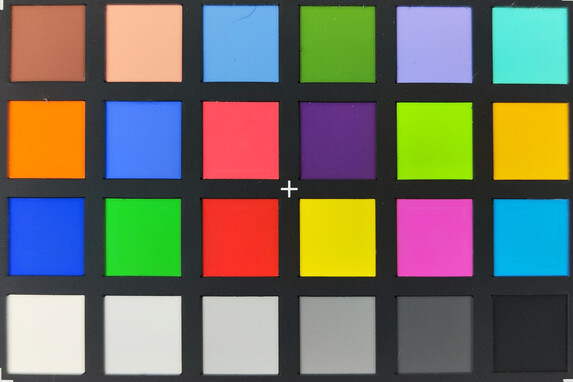

Accessories and Warranty
Xiaomi offers a 12-month warranty that does not have any bearing on the manufacturer's warranty. Additional service plans or warranty extensions are not available.
The Xiaomi 12 Pro's scope of delivery includes a modular 120-watt charger, a compatible USB cable (type-A to type-C), a SIM tool and a transparent silicone bumper. The manufacturer does not offer any additional accessories, although various third-party cases are available.
Input Devices & Handling - Fast Fingerprint Sensor and 480 Hz
The capacitive touchscreen of the Xiaomi 12 Pro has the ability to recognize up to ten inputs simultaneously, a high sampling rate of 480 Hz and protection from the robust Corning Gorilla Glass Victus. A fairly thick screen protector comes preapplied ex-factory and its edges feel somewhat hard on the outer bounds. While the gliding properties are still good, the user experience is significantly more comfortable without the screen protector. Either way, inputs feel reliable and responsive.
Xiaomi's preinstalled Chinese keyboards should quickly be replaced with a layout of your choice from the Play Store. All other differences compared to an international variant are fairly minor.
Xiaomi hides the fingerprint sensor beneath the display. While it is only an optical sensor, it worked very reliably in our testing and quickly unlocked our smartphone from standby. Alternatively or on top of that, a facial recognition that feels even faster by a small margin is available as well. With the MIUI 13, Xiaomi promises additional machine learning algorithms that are supposed to improve the security of the front camera's 2D facial recognition.
Display - Bright, Accurate, and up to 120 Hz
The Xiaomi 12 Pro features a 6.73-inch (17.09 cm, 109.35 cm²) AMOLED display with a maximum resolution of 3200 x 1440 pixels (WQHD+) and an enormously high piixel density of 521 PPI. However, this has to be manually enabled in the settings menu, since the smaller Full HD+ resolution (2400 x 1080 pixels, 391 PPI) is the default setting. When selecting the higher resolution, users also have the option to let the system automatically adjust the iit in order to prolong the battery life.
The system adaptively controls the refresh rate of the LTPO 2.0 panel within a range of 10 and 120 Hz. Alternatively, users can set a fixed refresh rate of 60, 90, or 120 Hz. The maximum brightness can only be achieved with the ambient light sensor, which quickly adjusted to new lighting conditions in our testing, enabled.
When displaying a purely white image, the AMOLED panel reaches up to 959 nits in the center. With an even distribution of bright and dark areas being displayed, the luminance climbs to a much higher 1279 nits in APL50, 1356 nits in APL25, and 1377 nits in APL10. This still puts the Xiaomi below its advertised maximum brightness (1500 nits). Manually setting the brightness caps the maximum at only 479 nits.
Like all OLEDs, the Xiaomi 12 Pro also continuously flickers. At minimum brightness, we measured a frequency of between 181.2 and 367.6 Hz. As the brightness increases, the amplitude and wavelength decrease. An anti-flicker mode is accessible only via the developer options and not a part of the standard operating system.
Furthermore, a blue light filter (reading mode) is on board and allows for the adjustment of the displayed color temperature and scheduled activation. The panel supports all common HDR standards: HLG, HDR10, HDR10+, and DolbyVision.
| |||||||||||||||||||||||||
Brightness Distribution: 96 %
Center on Battery: 959 cd/m²
Contrast: ∞:1 (Black: 0 cd/m²)
ΔE ColorChecker Calman: 1.1 | ∀{0.5-29.43 Ø4.78}
ΔE Greyscale Calman: 1.9 | ∀{0.09-98 Ø5}
99.8% sRGB (Calman 2D)
Gamma: 2.22
CCT: 6498 K
| Xiaomi 12 Pro AMOLED, 3200x1440, 6.7" | Samsung Galaxy S21 Ultra Dynamic AMOLED 2X, 3200x1440, 6.8" | Apple iPhone 13 Pro Max OLED, 2778x1284, 6.7" | Xiaomi Mi 11 Ultra AMOLED, 3200x1440, 6.8" | Oppo Find X3 Pro AMOLED, 3216x1440, 6.7" | Motorola Edge 20 Pro OLED, 2400x1080, 6.7" | |
|---|---|---|---|---|---|---|
| Screen | -18% | 25% | -12% | 7% | -13% | |
| Brightness middle (cd/m²) | 959 | 910 -5% | 1049 9% | 891 -7% | 759 -21% | 666 -31% |
| Brightness (cd/m²) | 977 | 913 -7% | 1060 8% | 888 -9% | 776 -21% | 644 -34% |
| Brightness Distribution (%) | 96 | 98 2% | 98 2% | 99 3% | 94 -2% | 93 -3% |
| Black Level * (cd/m²) | ||||||
| Colorchecker dE 2000 * | 1.1 | 2 -82% | 0.78 29% | 1.9 -73% | 0.8 27% | 1.4 -27% |
| Colorchecker dE 2000 max. * | 3.1 | 3.1 -0% | 1.72 45% | 3.7 -19% | 1.8 42% | 2.65 15% |
| Greyscale dE 2000 * | 1.9 | 2.2 -16% | 0.8 58% | 1.3 32% | 1.6 16% | 1.9 -0% |
| Gamma | 2.22 99% | 2.06 107% | 2.181 101% | 2.3 96% | 2.23 99% | 2.209 100% |
| CCT | 6498 100% | 6512 100% | 6559 99% | 6527 100% | 6512 100% | 6646 98% |
* ... smaller is better
Screen Flickering / PWM (Pulse-Width Modulation)
| Screen flickering / PWM detected | 367.6 Hz | ||
The display backlight flickers at 367.6 Hz (worst case, e.g., utilizing PWM) . The frequency of 367.6 Hz is relatively high, so most users sensitive to PWM should not notice any flickering. However, there are reports that some users are still sensitive to PWM at 500 Hz and above, so be aware. In comparison: 53 % of all tested devices do not use PWM to dim the display. If PWM was detected, an average of 8111 (minimum: 5 - maximum: 343500) Hz was measured. | |||
We analyze the accuracy of the AMOLED panel with a color depth of 10 bits using our spectrophotometer and our analysis software CalMAN. The Xiaomi 12 Pro reaches the most accurate image in the "Natural" mode, which uses the comparatively smaller sRGB color space. Here, the deltaE deviation is minimal and the color balance is nearly ideal.
While the mode "Vivid" uses the larger DCI-P3 color space, its color temperature is cooler and the color saturation higher.
Display Response Times
| ↔ Response Time Black to White | ||
|---|---|---|
| 2.4 ms ... rise ↗ and fall ↘ combined | ↗ 1.2 ms rise | |
| ↘ 1.2 ms fall | ||
| The screen shows very fast response rates in our tests and should be very well suited for fast-paced gaming. In comparison, all tested devices range from 0.1 (minimum) to 240 (maximum) ms. » 11 % of all devices are better. This means that the measured response time is better than the average of all tested devices (20.2 ms). | ||
| ↔ Response Time 50% Grey to 80% Grey | ||
| 7.2 ms ... rise ↗ and fall ↘ combined | ↗ 3.6 ms rise | |
| ↘ 3.6 ms fall | ||
| The screen shows very fast response rates in our tests and should be very well suited for fast-paced gaming. In comparison, all tested devices range from 0.165 (minimum) to 636 (maximum) ms. » 19 % of all devices are better. This means that the measured response time is better than the average of all tested devices (31.6 ms). | ||
Performance - Snapdragon 8 Gen. 1 for the Xiaomi 12 Pro
The Xiaomi 12 Pro is the first smartphone on the market that comes with Qualcomm's 2022 top-of-the-line SoC Snapdragon 8 Gen. 1. Depending on the model, Xiaomi pairs it with either 8 or, as with our test model, 12 GB of LPDDR5 RAM. The Adreno 730 acts as the integrated graphicis unit.
The raw CPU performance has only increased slightly compared to the chipset's predecessor and the Xiaomi 12 Pro falls slightly behind Qualcomm's reference design in Geekbench. This should not be the case for the GPU performance, where Vulkan API based applications can be expected to benefit significantly from the improvements over the Adreno 660 inside the Snapdragon 888. Our test results confirm this and the 3DMark graphics test show a lead of 13 to 83 %, with the smaller improvements belonging to scenarios with the older OpenGL ES interface.
GFXBench paints a similar picture. However, the Xiaomi 12 Pro does not reach its true potential in this benchmark. The latest test scenarios of GFXBench in particular (Aztec Ruins) show the reference design to be up to 44 % faster, which most likely stems from the Xiaomi 12 Pro's poor cooling.
| GFXBench (DX / GLBenchmark) 2.7 | |
| T-Rex Onscreen (sort by value) | |
| Xiaomi 12 Pro | |
| Samsung Galaxy S21 Ultra | |
| Apple iPhone 13 Pro Max | |
| Motorola Edge 20 Pro | |
| Xiaomi Mi 11 Ultra | |
| Oppo Find X3 Pro | |
| Average Qualcomm Snapdragon 8 Gen 1 (60 - 121, n=16) | |
| Average of class Smartphone (12 - 166, n=157, last 2 years) | |
| 1920x1080 T-Rex Offscreen (sort by value) | |
| Xiaomi 12 Pro | |
| Qualcomm Snapdragon 8 Gen 1 Reference | |
| Samsung Galaxy S21 Ultra | |
| Apple iPhone 13 Pro Max | |
| Motorola Edge 20 Pro | |
| Xiaomi Mi 11 Ultra | |
| Oppo Find X3 Pro | |
| Average Qualcomm Snapdragon 8 Gen 1 (245 - 450, n=17) | |
| Average of class Smartphone (22 - 954, n=157, last 2 years) | |
| GFXBench 3.0 | |
| on screen Manhattan Onscreen OGL (sort by value) | |
| Xiaomi 12 Pro | |
| Samsung Galaxy S21 Ultra | |
| Apple iPhone 13 Pro Max | |
| Motorola Edge 20 Pro | |
| Xiaomi Mi 11 Ultra | |
| Oppo Find X3 Pro | |
| Average Qualcomm Snapdragon 8 Gen 1 (60 - 121, n=16) | |
| Average of class Smartphone (18 - 166, n=159, last 2 years) | |
| 1920x1080 1080p Manhattan Offscreen (sort by value) | |
| Xiaomi 12 Pro | |
| Qualcomm Snapdragon 8 Gen 1 Reference | |
| Samsung Galaxy S21 Ultra | |
| Apple iPhone 13 Pro Max | |
| Motorola Edge 20 Pro | |
| Xiaomi Mi 11 Ultra | |
| Oppo Find X3 Pro | |
| Average Qualcomm Snapdragon 8 Gen 1 (141 - 265, n=17) | |
| Average of class Smartphone (12 - 606, n=158, last 2 years) | |
| GFXBench 3.1 | |
| on screen Manhattan ES 3.1 Onscreen (sort by value) | |
| Xiaomi 12 Pro | |
| Samsung Galaxy S21 Ultra | |
| Apple iPhone 13 Pro Max | |
| Motorola Edge 20 Pro | |
| Xiaomi Mi 11 Ultra | |
| Oppo Find X3 Pro | |
| Average Qualcomm Snapdragon 8 Gen 1 (50 - 121, n=16) | |
| Average of class Smartphone (11 - 166, n=159, last 2 years) | |
| 1920x1080 Manhattan ES 3.1 Offscreen (sort by value) | |
| Xiaomi 12 Pro | |
| Qualcomm Snapdragon 8 Gen 1 Reference | |
| Samsung Galaxy S21 Ultra | |
| Apple iPhone 13 Pro Max | |
| Motorola Edge 20 Pro | |
| Xiaomi Mi 11 Ultra | |
| Oppo Find X3 Pro | |
| Average Qualcomm Snapdragon 8 Gen 1 (95 - 175, n=17) | |
| Average of class Smartphone (8.4 - 413, n=158, last 2 years) | |
| Basemark ES 3.1 / Metal - offscreen Overall Score (sort by value) | |
| Xiaomi 12 Pro | |
| Samsung Galaxy S21 Ultra | |
| Average Qualcomm Snapdragon 8 Gen 1 (2293 - 2663, n=2) | |
| Average of class Smartphone (205 - 7731, n=36, last 2 years) | |
Although the Xiaomi 12 Pro performs well in the system benchmarks, it still does not quite match our expectations. In AnTuTu, for example, it secures a big lead over its competiton, but does not manage the jump into a seven-digit score. In PCMark it trails the reference design by 23 %. This is in part due to MIUI and partially due to the heat development of the SoC. Our subjective impressions from day-to-day use match these results, since small micro stuttering can be observed even when navigating the system's menus.
In terms of the AI acceleration, the 12 Pro does very well and outperforms all competitors by a large margin.
| Antutu v9 - Total Score | |
| Qualcomm Snapdragon 8 Gen 1 Reference | |
| Xiaomi 12 Pro | |
| Asus ROG Phone 5 | |
| Xiaomi Mi 11 Ultra | |
| Apple iPhone 13 Pro Max | |
| Samsung Galaxy S21 Ultra | |
| Google Pixel 6 | |
| Motorola Edge 20 Pro | |
| PCMark for Android - Work 3.0 | |
| Qualcomm Snapdragon 8 Gen 1 Reference | |
| Asus ROG Phone 5 | |
| Samsung Galaxy S21 Ultra | |
| Xiaomi Mi 11 Ultra | |
| Xiaomi 12 Pro | |
| Motorola Edge 20 Pro | |
| Google Pixel 6 | |
| UL Procyon AI Inference for Android - Overall Score NNAPI | |
| Xiaomi 12 Pro | |
| Google Pixel 6 | |
| Asus ROG Phone 5 | |
| Motorola Edge 20 Pro | |
| Samsung Galaxy S21 Ultra | |
| AImark - Score v2.x | |
| Xiaomi Mi 11 Ultra | |
| Samsung Galaxy S21 Ultra | |
| Asus ROG Phone 5 | |
| Apple iPhone 13 Pro Max | |
| Qualcomm Snapdragon 8 Gen 1 Reference | |
| Xiaomi 12 Pro | |
| Google Pixel 6 | |
| Motorola Edge 20 Pro | |
As expected, the browser performance of the Xiaomi 12 Pro is fast and browsing the web feels very responsive, although it does not break any records in our benchmarks.
| Jetstream 2 - 2.0 Total Score | |
| Apple iPhone 13 Pro Max (Safari 15) | |
| Average of class Smartphone (23.8 - 387, n=153, last 2 years) | |
| Average Qualcomm Snapdragon 8 Gen 1 (72.8 - 134.6, n=16) | |
| Xiaomi Mi 11 Ultra (Chrome91) | |
| Motorola Edge 20 Pro (Chrome 94) | |
| Xiaomi 12 Pro (Chrome 97) | |
| Samsung Galaxy S21 Ultra (Chrome 88) | |
| JetStream 1.1 - Total Score | |
| Apple iPhone 13 Pro Max (Safari 15) | |
| Average Qualcomm Snapdragon 8 Gen 1 (121.9 - 237, n=11) | |
| Motorola Edge 20 Pro (Chrome 94) | |
| Xiaomi Mi 11 Ultra (Chrome91) | |
| Xiaomi 12 Pro (Chrome 97) | |
| Oppo Find X3 Pro (Chrome 89) | |
| Samsung Galaxy S21 Ultra (Chrome 88) | |
| Speedometer 2.0 - Result 2.0 | |
| Apple iPhone 13 Pro Max (Safari 15) | |
| Average of class Smartphone (15.2 - 643, n=126, last 2 years) | |
| Average Qualcomm Snapdragon 8 Gen 1 (64.4 - 129.3, n=16) | |
| Xiaomi Mi 11 Ultra (Chrome91) | |
| Samsung Galaxy S21 Ultra (Chrome 88) | |
| Xiaomi 12 Pro (Chrome 97) | |
| Motorola Edge 20 Pro (Chrome 94) | |
| WebXPRT 3 - Overall | |
| Apple iPhone 13 Pro Max (Safari 15) | |
| Average of class Smartphone (38 - 380, n=34, last 2 years) | |
| Average Qualcomm Snapdragon 8 Gen 1 (79 - 193, n=15) | |
| Xiaomi Mi 11 Ultra (Chrome91) | |
| Samsung Galaxy S21 Ultra (Chrome 88) | |
| Oppo Find X3 Pro (Chrome 89) | |
| Motorola Edge 20 Pro (Chrome 94) | |
| Xiaomi 12 Pro (Chrome 97) | |
| Octane V2 - Total Score | |
| Apple iPhone 13 Pro Max (Safari 15) | |
| Average of class Smartphone (2228 - 121337, n=201, last 2 years) | |
| Average Qualcomm Snapdragon 8 Gen 1 (27730 - 50626, n=17) | |
| Motorola Edge 20 Pro (Chrome 94) | |
| Xiaomi Mi 11 Ultra (Chrome91) | |
| Xiaomi 12 Pro (Chrome 97) | |
| Oppo Find X3 Pro (Chrome 89) | |
| Samsung Galaxy S21 Ultra (Chrome 88) | |
| Mozilla Kraken 1.1 - Total | |
| Samsung Galaxy S21 Ultra (Chrome 88) | |
| Xiaomi Mi 11 Ultra (Chrome91) | |
| Oppo Find X3 Pro (Chrome 89) | |
| Xiaomi 12 Pro (Chrome 97) | |
| Motorola Edge 20 Pro (Chrome 94) | |
| Average of class Smartphone (257 - 28190, n=156, last 2 years) | |
| Average Qualcomm Snapdragon 8 Gen 1 (814 - 1440, n=16) | |
| Apple iPhone 13 Pro Max (Safari 15) | |
| Sunspider - 1.0 Total Score | |
| Samsung Galaxy S21 Ultra (Chrome 88) | |
| Average Qualcomm Snapdragon 8 Gen 1 (n=1) | |
| Xiaomi 12 Pro (Chrome 97) | |
| Average of class Smartphone (134.3 - 156.3, n=2, last 2 years) | |
* ... smaller is better
The speeds of the UFS 3.1 storage inside the Xiaomi 12 Pro are blazing fast and there are notable improvements in almost all areas and although it does not break the record for sequential reads, this is not noticeable during daily use.
| Xiaomi 12 Pro | Motorola Edge 20 Pro | Samsung Galaxy S21 Ultra | Xiaomi Mi 11 Ultra | Oppo Find X3 Pro | Average 256 GB UFS 3.1 Flash | Average of class Smartphone | |
|---|---|---|---|---|---|---|---|
| AndroBench 3-5 | -33% | -15% | -19% | -24% | -13% | 7% | |
| Sequential Read 256KB (MB/s) | 1620 | 1699 5% | 1710 6% | 1928 19% | 1779 10% | 1757 ? 8% | 2216 ? 37% |
| Sequential Write 256KB (MB/s) | 1465 | 723 -51% | 1077 -26% | 756 -48% | 759 -48% | 1204 ? -18% | 1837 ? 25% |
| Random Read 4KB (MB/s) | 324.9 | 245.7 -24% | 316.7 -3% | 259.3 -20% | 273.3 -16% | 287 ? -12% | 294 ? -10% |
| Random Write 4KB (MB/s) | 448.9 | 179.6 -60% | 279.5 -38% | 329.7 -27% | 267.1 -40% | 318 ? -29% | 334 ? -26% |
Gaming - Poor Cooling Taints the Gaming Experience
The Adreno 730 inside the Xiaomi 12 Pro should in theory be one of the strongest graphics units available in an Android smartphone. The Vulkan performance in particular has been massively improved and HFR gaminig should be possible without any limitations.
Unfortuantely, our GameBench analysis of three games shows that the 12 Pro does not manage to meet these expectations. While the frame rates in PUBG Mobile at Ultra HD remain at a consistent 40 FPS, lower detail settings with higher frame rates reveal frame drops that are visible as stuttering.
A similar behavior can be observed in Genshiin Impact, although the maximum frame rate is not very high at 35 FPS. In this scenario, a Galaxy S21 Ultra can usually manage frame rates in excess of 55 FPS. Even though at a lower preset, the Xiaomi 12 Pro starts at 60 FPS, it falls to 35 FPS with occasional stuttering after a short time.
While Wild Rift runs very well, the Xiaomi phone only supports up to 60 FPS and 90 or even 120 frames per seconds cannot be selected from the settings menu. Here, the Galaxy S21 FE is at an advantage with stutter-free gaming at 120 FPS.
Emissions - A Symphony for the Senses
Temperature
The surface temperatures of the Xiaomi 12 Pro remain comfortably low while idling. Under prolonged load, the temperatures rise as expected, although the heat distribution is very even and the temperatures still do not significantly exceed the body temperature.
The same cannot be said for the internals of the smartphone: The cooling solution touted as large does not quite sufficiently deal with the heat development. In 3DMark's stress tests, the 12 Pro shows significant performance drops that may impact the performance during daily use, matching our observations of the gaming benchmarks. The system even had to abort the stress test Wild Life Extreme, in order to prevent it from overheating (see screenshot). This also hints at limitations on warm summer days.
While we were able to run the GFXBench battery test, trying to access the results lead to the app crashing, which is why they are not listed here.
(+) The maximum temperature on the upper side is 37.6 °C / 100 F, compared to the average of 35.2 °C / 95 F, ranging from 21.9 to 247 °C for the class Smartphone.
(+) The bottom heats up to a maximum of 37 °C / 99 F, compared to the average of 34 °C / 93 F
(+) In idle usage, the average temperature for the upper side is 26.3 °C / 79 F, compared to the device average of 32.9 °C / 91 F.
3DMark Wild Life Stress Test
Speakers
The two stereo speakers of the Xiaomi 12 Pro have been optimized by Harman Kardon and they leave a very good impression. For a smartphone, the sound is relatively balanced and even sounds fairly rich, since even the upper bass frequencies are still included.
Alternatively, headphones can be connected via the USB-C port or wirelessly via Bluetooth. Xiaomi has gone all out and with SBC, AAC, aptX, aptX Adaptive, AptX TWS+, LDAC, and LDHC (version 1 to 4), all established standards are on board.
Xiaomi 12 Pro audio analysis
(+) | speakers can play relatively loud (84.2 dB)
Bass 100 - 315 Hz
(-) | nearly no bass - on average 18.8% lower than median
(±) | linearity of bass is average (12.9% delta to prev. frequency)
Mids 400 - 2000 Hz
(+) | balanced mids - only 4.2% away from median
(+) | mids are linear (4.4% delta to prev. frequency)
Highs 2 - 16 kHz
(+) | balanced highs - only 3.1% away from median
(+) | highs are linear (6.8% delta to prev. frequency)
Overall 100 - 16.000 Hz
(+) | overall sound is linear (14.8% difference to median)
Compared to same class
» 2% of all tested devices in this class were better, 2% similar, 96% worse
» The best had a delta of 11%, average was 35%, worst was 134%
Compared to all devices tested
» 19% of all tested devices were better, 4% similar, 77% worse
» The best had a delta of 4%, average was 24%, worst was 134%
Samsung Galaxy S21 Ultra audio analysis
(+) | speakers can play relatively loud (88 dB)
Bass 100 - 315 Hz
(-) | nearly no bass - on average 22.9% lower than median
(±) | linearity of bass is average (11.9% delta to prev. frequency)
Mids 400 - 2000 Hz
(+) | balanced mids - only 3.4% away from median
(+) | mids are linear (4.5% delta to prev. frequency)
Highs 2 - 16 kHz
(+) | balanced highs - only 4.2% away from median
(+) | highs are linear (6.3% delta to prev. frequency)
Overall 100 - 16.000 Hz
(+) | overall sound is linear (14.9% difference to median)
Compared to same class
» 2% of all tested devices in this class were better, 2% similar, 96% worse
» The best had a delta of 11%, average was 35%, worst was 134%
Compared to all devices tested
» 19% of all tested devices were better, 4% similar, 77% worse
» The best had a delta of 4%, average was 24%, worst was 134%
Energy Management - Xiaomi 12 Pro with 4600 mAh
Energy Consumption
The power draw of the Xiaomi 12 Pro has been improved and is only somewhat high at minimum brightness while idling despite the adaptive refresh rate of the screen.
The 4600-mAh battery can be fully recharged with the included 120-watt chager in just 24 minutes or charget to 75 % in 15 minutes. Furthermore, the Xiaomi smartphone supports wireless charging at up to 50 watts and reverse wireless charging at up to 10 watts.
| Off / Standby | |
| Idle | |
| Load |
|
Key:
min: | |
| Xiaomi 12 Pro 4600 mAh | Motorola Edge 20 Pro 4500 mAh | Samsung Galaxy S21 Ultra 5000 mAh | Xiaomi Mi 11 Ultra 5000 mAh | Oppo Find X3 Pro 4500 mAh | Apple iPhone 13 Pro Max 4352 mAh | Average Qualcomm Snapdragon 8 Gen 1 | Average of class Smartphone | |
|---|---|---|---|---|---|---|---|---|
| Power Consumption | 23% | -9% | -19% | -16% | 15% | -33% | -18% | |
| Idle Minimum * (Watt) | 0.94 | 0.7 26% | 1.06 -13% | 1.13 -20% | 0.93 1% | 0.6 36% | 1.255 ? -34% | 0.848 ? 10% |
| Idle Average * (Watt) | 1.24 | 0.9 27% | 1.19 4% | 1.67 -35% | 1.54 -24% | 1.5 -21% | 2.02 ? -63% | 1.434 ? -16% |
| Idle Maximum * (Watt) | 1.34 | 1.2 10% | 1.2 10% | 1.69 -26% | 1.69 -26% | 1.6 -19% | 2.21 ? -65% | 1.618 ? -21% |
| Load Average * (Watt) | 5.7 | 4.6 19% | 6.46 -13% | 5.17 9% | 6.38 -12% | 3.5 39% | 5.49 ? 4% | 7.01 ? -23% |
| Load Maximum * (Watt) | 8.12 | 5.5 32% | 10.76 -33% | 9.9 -22% | 9.58 -18% | 4.8 41% | 8.75 ? -8% | 11.3 ? -39% |
* ... smaller is better
Energy Consumption: Geekbench (150 nits)
Energy Consumption: GFXBench (150 nits)
Battery Life
The battery life of the Xiaomi 12 Pro is very good overall and it performs particularly well in our real-world Wi-Fi test with the brightness adjusted to 150 nits, where it demonstrates a lot of stamina and outlasts all other Android smartphones in our comparison. Although the video playback time is comparatively shorter, it is still very long.
| Xiaomi 12 Pro 4600 mAh | Motorola Edge 20 Pro 4500 mAh | Samsung Galaxy S21 Ultra 5000 mAh | Apple iPhone 13 Pro Max 4352 mAh | Xiaomi Mi 11 Ultra 5000 mAh | Oppo Find X3 Pro 4500 mAh | |
|---|---|---|---|---|---|---|
| Battery runtime | 2% | 4% | 52% | -13% | -2% | |
| Reader / Idle (h) | 33.9 | 28.2 -17% | 23.5 -31% | 47.4 40% | 18.5 -45% | |
| H.264 (h) | 13.1 | 21.5 64% | 21.8 66% | 25.4 94% | 16.8 28% | |
| WiFi v1.3 (h) | 12.8 | 12.9 1% | 11.7 -9% | 17.8 39% | 10.8 -16% | 12.6 -2% |
| Load (h) | 5.6 | 3.3 -41% | 5.1 -9% | 7.5 34% | 4.6 -18% |
Pros
Cons
Verdict on the Xiaomi 12 Pro
The Xiaomi 12 Pro is an excellent smartphone with a great display, modern SoC, long battery life, and a good triple camera.
Furthermore, the design of the smartphone is exceptionally appealing, the speakers produce great sound, the charging rate is extremely fast, and the geolocation precision of the 12 Pro is impressive as well.
However, the cooling of the smartphone warrants criticism: Overheating is an issue during demanding stress tests and while gaming, where the frame rates can be adversely affected. The summer time will show whether there are any limitations regarding the use of the camera or display in warm weather.
The Xiaomi 12 Pro is an impressive piece of technology that sometimes shoots itself in the foot.
While the lack of support for the 6-GHz band from the titular Wi-Fi 6E module is not a major misstep by today's standards, it is still disappointing with regards to the potentially long life span of the smartphone. There is a chance that Xiaomi will address this aspect with the international version of the smartphone. The manufacturer also fails to deliver on the adaptive refresh rate adjustment from 1 to 120 Hz promised at launch, although a minimum of 10 Hz is still very good.
Strong competitors of the Xiaomi 12 Pro include the Galaxy S21 FE 5G, Google Pixel 6, and the upcoming Galaxy S22 Plus.
Price and Availability
The Xiaomi 12 Pro is currently available via import shops such as our lender TradingShenzhen, where it can be purchased cheaply for between ~933 USD and ~1050 USD. With the launch of the international version, it will also become available from local retailers, albeit at a higher price.
Xiaomi 12 Pro
- 08/30/2022 v7 (old)
Daniel Schmidt




